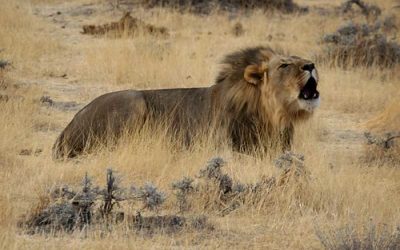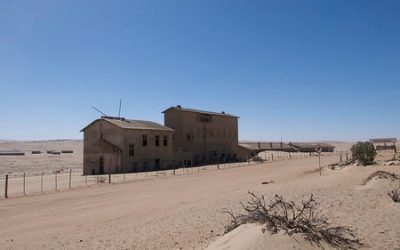Current Political Landscape in Namibia
The current political landscape in Namibia is characterized by stability and ongoing efforts to foster economic growth and social development. The ruling South West Africa People’s Organization (SWAPO) continues to dominate the political scene, maintaining a strong hold on governance since independence. However, there are also emerging voices advocating for political reforms, greater transparency, and addressing issues such as inequality and unemployment. The nation remains focused on balancing tradition with modern democratic practices to secure a prosperous future for its citizens.
Leadership and Government Structure
The current political landscape in Namibia is characterized by stability and ongoing efforts to promote development and democratic governance. The country continues to navigate challenges related to economic reform, social equity, and regional cooperation. Namibia’s leadership remains focused on consolidating democratic institutions and addressing issues such as unemployment and poverty through various policy initiatives.
The government structure in Namibia is a democratic republic with a president serving as both head of state and government. It features a multi-party system that encourages political participation and representation. The country’s political framework is designed to ensure separation of powers among the executive, legislative, and judicial branches.
- The President is elected for a five-year term through direct popular vote and can serve a maximum of two terms.
- The Parliament consists of two chambers: the National Assembly and the National Council. Members of the National Assembly are elected by proportional representation, while members of the National Council are elected by regional councils.
- The Executive branch is led by the President and the Cabinet, with ministers appointed to oversee various government departments.
- The Judiciary is independent and tasked with upholding the rule of law and interpreting the constitution.
- Major political parties include the South West Africa People’s Organization (SWAPO), which has historically dominated Namibia’s politics, along with opposition parties striving for greater influence.
Main Political Parties and Recent Elections
The current political landscape in Namibia is characterized by a stable democracy dominated by the South West Africa People’s Organization (SWAPO), which has maintained power since independence in 1990. The country continues to experience political stability with ongoing efforts to promote economic development, social progress, and good governance. Recent elections have reinforced SWAPO’s dominance, though opposition parties are increasingly active and advocating for alternative policies. Namibia’s political environment remains focused on addressing issues such as unemployment, economic diversification, and social inequality while managing regional and international relations. The electoral process is generally regarded as transparent and free, reflecting Namibia’s commitment to democratic principles.
Main political parties in Namibia include SWAPO, the Democratic Turnhalle Alliance (DTA), now known as the Popular Democratic Movement (PDM), and other smaller parties like the Landless People’s Movement (LPM) and the Christian Democratic Social Party (CDSP). SWAPO continues to be the leading party, commanding a significant majority of seats in the National Assembly, while opposition parties seek to increase their influence and challenge SWAPO’s dominance through democratic means.
In recent elections, SWAPO secured a decisive victory, reaffirming its popularity among voters. The most recent national elections showcased high voter turnout, and despite some concerns about fairness and transparency voiced by opposition parties, the process was largely peaceful. These elections reflect Namibia’s ongoing commitment to democratic processes even as it navigates economic and social challenges facing the nation.
Economic Overview and Developments
Namibia’s economy is experiencing a period of gradual recovery and development, driven by a combination of natural resources, reconstruction efforts, and strategic investments. The country remains heavily reliant on mining, particularly uranium, diamond, and other mineral exports, which significantly influence overall economic stability. Recent developments focus on diversifying the economy, attracting foreign investment, and strengthening sectors like tourism and agriculture to promote sustainable growth in the contemporary economic landscape of Namibia.
Key Industries and Sectors
Namibia’s economy is characterized by a diverse industrial base with significant reliance on natural resources and a steady economic growth trajectory. The country has experienced moderate growth driven by mining, agriculture, manufacturing, and tourism sectors, despite global economic fluctuations. Efforts to diversify the economy have included investments in renewable energy, fisheries, and manufacturing to reduce dependence on the diamond and uranium industries.
The mining industry remains a cornerstone of Namibia’s economy, with minerals such as diamonds, uranium, copper, gold, and zinc playing vital roles in export revenues. Agriculture also contributes substantially, providing livelihoods for a large portion of the population, with meat and crop exports enhancing foreign exchange earnings. The tourism sector capitalizes on Namibia’s unique landscapes, including deserts, dunes, and wildlife reserves, attracting international visitors and supporting employment and infrastructure development. Additionally, there has been a growing emphasis on renewable energy projects, notably solar and wind energy, to meet domestic demands and promote sustainable development.
Recent Economic Policies and Reforms
Namibia’s current economic landscape is characterized by gradual growth, driven primarily by its rich natural resources, including minerals, fish, and tourism. The country has been focusing on diversifying its economy to reduce dependence on mining and improve sustainability, emphasizing sectors such as agriculture, manufacturing, and services. Recent economic developments include investments in infrastructure and renewable energy projects, aiming to enhance productivity and attract foreign investment.
In terms of recent policies and reforms, Namibia has introduced initiatives to improve fiscal stability and financial sector resilience. Reforms have been implemented to streamline customs procedures, enhance ease of doing business, and attract foreign direct investment. The government has also prioritized social and economic inclusion through programs aimed at reducing inequality and promoting sustainable development, aligning with broader goals of economic resilience and long-term growth.
Challenges and Opportunities for Growth
Namibia’s economy is characterized by its rich natural resource base, including minerals, fish, and tourism-driven sectors. In recent years, the country has experienced moderate growth, supported by development initiatives aimed at diversifying the economy beyond traditional sectors such as mining and fishing. Key economic activities include uranium, diamonds, and other mineral exports, which contribute significantly to national revenues.
However, Namibia faces several challenges that impact sustainable development. High unemployment rates, especially among youth, pose a major concern, alongside income inequality and limited access to quality education and healthcare. The reliance on commodity exports also makes the economy vulnerable to global market fluctuations and commodity price volatility. Additionally, infrastructure deficits and energy shortages hinder broader economic development and competitiveness.
Despite these challenges, Namibia presents numerous opportunities for growth. The expansion of the tourism industry, driven by its unique wildlife and landscapes, remains promising. The government is also exploring renewable energy projects, like solar and wind power, to improve energy security and attract investment. Efforts to promote local entrepreneurship and improve infrastructure could stimulate economic diversification. Investing in human capital through education and vocational training is crucial to unlock the country’s full economic potential and foster sustainable development in Namibia.
Social and Cultural Environment
The social and cultural environment of Namibia today reflects a rich tapestry of diverse traditions, languages, and beliefs that shape the nation’s identity. As Namibia continues to develop, these social and cultural factors play a crucial role in influencing community life, social norms, and national policies. Understanding this environment is essential for appreciating Namibia’s unique heritage and how it adapts to contemporary changes in the modern world.
Demographics and Population Trends
The social and cultural environment of Namibia is characterized by a diverse and vibrant tapestry of ethnic groups, traditions, and languages. The country is home to several indigenous communities, including the Ovambo, Herero, Himba, and Damara, each contributing unique cultural practices, customs, and festivals that enrich Namibia’s national identity. This diversity fosters a multicultural society where traditional values coexist with modern influences, shaping social interactions and community life.
Demographics and population trends in Namibia reveal a young and growing population. The country has a high birth rate, resulting in a youthful demographic profile with a significant percentage of the population under the age of 25. Urbanization is increasing, with major cities like Windhoek experiencing rapid growth due to migration from rural areas seeking employment and better services. While rural settlements still constitute a large segment of the population, ongoing demographic shifts are influencing social and economic development across the nation.
Overall, Namibia’s social and cultural landscape is dynamic, with an ever-changing demographic profile that impacts the country’s development priorities and social cohesion. The government and various organizations are actively working to preserve cultural heritage while addressing the challenges associated with population growth and urban expansion.
Traditional and Contemporary Cultural Practices
The social and cultural environment of Namibia today reflects a rich tapestry of traditional customs and contemporary influences, shaped by its diverse population and historical background. Namibia’s society is characterized by numerous ethnic groups, each with distinct cultural practices, languages, and social norms that contribute to the nation’s vibrant cultural landscape. Traditional practices such as storytelling, music, dance, and rituals remain vital parts of community life, fostering a sense of identity and continuity among various groups.
In recent years, Namibia has experienced a blending of traditional and modern cultural practices. Urbanization and globalization have introduced contemporary forms of entertainment, fashion, and communication, influencing younger generations while still respecting traditional values. Festivals and ceremonies often incorporate modern elements alongside customary rituals, highlighting Namibia’s ability to adapt and evolve culturally. Education and media also play significant roles in promoting cultural awareness and fostering a sense of national unity amidst diversity.
Education and Healthcare Systems
Namibia’s social and cultural environment is characterized by a diverse mix of ethnic groups, including Ovambo, Herero, Damara, Nama, and others, each contributing to the rich cultural tapestry of the nation. Traditional customs, festivals, and languages play a vital role in community life, fostering a sense of identity and belonging. The society values community cooperation and respect for elders, which are deeply rooted in its cultural practices.
Education in Namibia has seen significant improvements, with efforts focused on increasing access and quality. The education system includes primary, secondary, and tertiary levels, with the government promoting initiatives to reduce dropout rates and literacy levels. Despite progress, challenges such as resource shortages and disparities between urban and rural areas still impact educational development.
Namibia’s healthcare system provides basic medical services through a network of public clinics and hospitals, particularly in urban areas. The government aims to improve healthcare access and quality, focusing on reducing the prevalence of communicable diseases such as HIV/AIDS, which remains a major health concern. Efforts are ongoing to strengthen medical infrastructure, train healthcare workers, and expand health education to ensure better health outcomes for the population.
Environmental Conditions and Conservation
Environmental conditions in Namibia are shaped by its diverse landscapes, including deserts, savannas, and wetlands, which support unique ecosystems and wildlife. Conservation efforts are crucial for maintaining these natural habitats amid challenges such as climate change, water scarcity, and human activity. By implementing sustainable practices and protecting biodiversity, Namibia strives to preserve its environment for future generations while promoting eco-tourism and sustainable development.
Climate and Weather Patterns
Namibia’s environmental conditions and conservation efforts are shaped by its arid climate and diverse weather patterns. The country experiences significant seasonal variations, with desert regions receiving minimal rainfall, leading to fragile ecosystems that require careful management. Climate trends indicate increasing temperatures and irregular rainfall, which pose challenges to agriculture, water availability, and biodiversity preservation. Namibia’s commitment to conservation is evident through its extensive network of protected areas and community-based resource management programs, aiming to sustain its unique flora and fauna amid changing climatic conditions. These efforts are crucial in mitigating the impacts of climate variability and ensuring the long-term health of Namibia’s environmental heritage.
Natural Resources and Sustainability Efforts
Namibia currently faces significant environmental challenges due to climate change, desertification, and overexploitation of natural resources. Efforts to conserve its unique biodiversity include establishing protected areas such as Etosha National Park and promoting sustainable tourism practices. The country heavily relies on natural resources like minerals, freshwater, and wildlife, which require careful management to ensure long-term sustainability. Namibia has implemented various policies and community-based programs aimed at conserving its ecosystems, promoting renewable energy solutions, and encouraging responsible resource use. These initiatives are vital for maintaining the country’s environmental health and supporting the livelihoods of its people while safeguarding natural heritage for future generations.
Protected Areas and Wildlife Conservation
Namibia faces unique environmental challenges due to its arid climate, sparse rainfall, and diverse ecosystems. The country’s environmental conditions are characterized by vast deserts, such as the Namib Desert, and savannahs that support a rich variety of wildlife. These conditions necessitate effective conservation efforts to sustain both the natural environment and the livelihoods of local communities.
Conservation initiatives in Namibia have gained international recognition, particularly in the realm of community-based natural resource management. The community conservancies empower local populations to manage and benefit from wildlife, promoting sustainable practices that protect biodiversity while supporting economic development.
Protected areas are vital for preserving Namibia’s unique habitats and species. National parks like Etosha, Waterberg Plateau, and Skeleton Coast serve as refuges for diverse flora and fauna, including endangered species such as black rhinos and cheetahs. These areas also attract eco-tourism, which contributes significantly to the nation’s economy.
Wildlife conservation efforts are bolstered by government policies, international partnerships, and non-governmental organizations working together to combat poaching, habitat loss, and human-wildlife conflict. Namibia has become a leader in innovative conservation strategies, demonstrating how sustainable management of natural resources can coexist with national development goals.
Tourism and Hospitality Industry
The tourism and hospitality industry plays a vital role in Namibia’s economy, offering diverse experiences that showcase the country’s rich natural landscapes, unique wildlife, and vibrant culture. As one of Africa’s premier travel destinations, Namibia attracts visitors from around the world seeking adventure, relaxation, and authentic cultural encounters. The industry continues to evolve, adapting to new trends and emphasizing sustainable tourism to preserve Namibia’s stunning environment for future generations.
Popular Tourist Destinations
The tourism and hospitality industry in Namibia is experiencing significant growth, attracting visitors from around the world eager to explore its diverse landscapes and unique attractions. Namibia is renowned for its stunning deserts, wildlife safaris, and rich cultural heritage, making it a popular destination for adventure travelers and nature enthusiasts.
Some of the most popular tourist destinations in Namibia include the breathtaking Etosha National Park, famous for its abundant wildlife and saline desert pan; the towering sand dunes of Sossusvlei in the Namib Desert, which offer surreal landscapes and excellent photography opportunities; and the coastal town of Swakopmund, known for its German colonial architecture and adventure sports such as sandboarding and quad biking. Other notable sites include the Fish River Canyon, one of the largest canyons in the world, and the Himba villages, where visitors can learn about indigenous cultures. As Namibia continues to develop its tourism infrastructure, it remains a compelling destination for travelers seeking authentic experiences amidst natural beauty.
Impact of Tourism on the Economy
The tourism and hospitality industry plays a vital role in Namibia’s economy, especially in the current time. As a country known for its stunning landscapes, diverse wildlife, and rich cultural heritage, Namibia attracts a growing number of international visitors each year. This influx of tourists boosts local businesses, creates jobs, and generates foreign exchange revenue. The industry also supports small-scale entrepreneurs, from hotel owners to tour guides, contributing significantly to rural development and poverty alleviation. Moreover, tourism encourages investment in infrastructure, such as airports, roads, and communication networks, which benefits the broader economy. In summary, tourism remains a key driver of Namibia’s economic growth, fostering sustainable development and enhancing global recognition of the nation’s natural and cultural assets.
Recent Trends and Future Prospects
The Tourism and Hospitality Industry in Namibia is experiencing dynamic shifts driven by changing traveler preferences, technological advancements, and a growing emphasis on sustainable practices. Recent trends indicate an increasing popularity of eco-tourism and adventure tourism, capitalizing on Namibia’s stunning landscapes, wildlife, and unique geological formations. Digital transformation has also played a crucial role, with more tourists relying on online platforms for planning and booking their travel experiences. Additionally, health and safety concerns have heightened the importance of contactless services and eco-friendly accommodations.
Looking ahead, the future prospects for Namibia’s tourism sector appear promising, with ongoing investments in infrastructure and community-based tourism projects expected to boost local economies. The government and private sector are focusing on promoting Namibia as a high-end eco-destination, attracting discerning travelers seeking authentic and responsible travel experiences. Furthermore, technological innovations such as virtual reality and AI-driven personalization are poised to enhance visitor engagement. Sustainable tourism practices are becoming integral to Namibia’s long-term strategy, ensuring the preservation of its natural treasures while providing economic benefits to local communities.





0 Comments